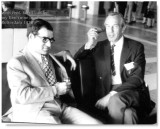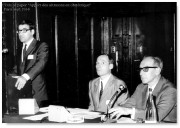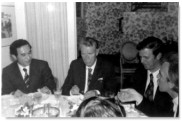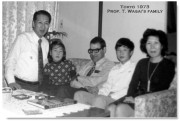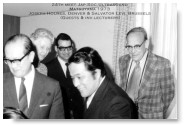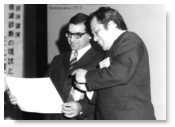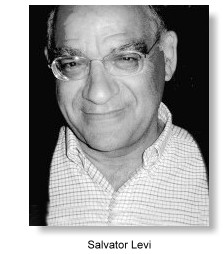
Being the pioneer in Obstetrical and Gynecological ultrasonography in Belgium, Professor Levi is also one of the most important, influential and well-known ultrasound figures in the era of the "ultrasonic boom" (in the mid 1960s). He became interested in ultrasound shortly after his training in the early 1960s and started to use an A-mode scanner (from Siemens? used in neurology) in 1966, doing biparietal diameter measurements. In the same year he went over to Lund, Sweden to study under Dr. Bertil Sunden. In 1967 he travelled to Glasgow to study under Professor Ian Donald and in the same year, he borrowed a B-mode compound contact scanner from the Japanese ultrasound Company Aloka? This was the first of such scanners in Europe from a Japanese manufacturer. Levi published several important early papers with the instrument, which he had tried to improve and modify. He presented his first paper in 1967 at a French meeting in Monte Carlo and later on in the same year he presented a more comprehensive study as a plenary lecture at the Societe Royale Belge de Gynecologie et d' Obsterique meeting.
In 1968 he travelled all the way to Japan to study under Professor Toshio Wagai at the Juntendo University, Toyko. There he became versant with research and equipment of the Aloka?company. His later sabbatical with George Kossoff at the Commonwealth Accoustic Laboratory (CAL) in Sidney, Australia also acquainted him with state-of-the-art transducer technology and the UI Octoson scanner which Levi had started to use back in his own laboratory in 1980. In his stay with Kossoff as well as working through his appointment as Senior research scientist at the Indianapolis Center for Advanced Research in Indianapolis, USA, Levi was able to (in his own words) "take a bath in the wonderful atmosphere of more fundamental research in ultrasound ...." .
Levi's early work centered around the study of cephalometry, ultrasonic diagnosis of gynecological tumors and diseases, ultrasound safety, early pregnancy complications, abortions, ectopic pregnancies, tissue characterization and later on studies of fetal malformations. In 1972 the 'European Study Group of Fetal Biometry by Ultrasound' was formed comprising of Stuart Campbell, Malte Hinselman, Hans Hollander, Alfred Kratochwil and Levi. The group looked into the various facets of fetal body measurements and standardization. In the same year Levi published his first book (in French): Diagnostic par ultrasons en Gynecologie-obstetrique.
Levi was also well known for his historical accounts of the development of ultrasonography in the specialty. He published the important 71-pages account of "The History of Ultrasound in Gynecology 1950 - 1980" in 1997 in Ultrasound in Medicine and Biology, the official journal of the World Federation for Ultrasound in Medicine and Biology (WFUMB). In the pre-introduction he wrote,
"To my colleagues and friends from the early days, alive or palatino not, when ultrasound was like a fraternity, everyone knowing everybody, each meeting being a momentous occasion .....".More recently Levi was project leader of the historically important EUROFETUS study group which looked at the effacacy of routine ultrasound examinations in 200,000 low-risk pregnant women in 60 hospitals in Europe. Levi was a strong proponent of routine second trimester screening.
Professor Levi was regarded by many as a most distinguished teacher, speaker, clinician and researcher. His entire career was devoted to the application and advancement of ultrasonography in diseases of women. He was among a handful of ultrasound pioneers that have remained active and productive from the 1960s right up to the turn of the millenium. He had published over 400 journal articles as well and contributing as editor or co-editor in over 80 books and monographs. Among other accolades, Levi is an Honorary Fellow of the American Institute of Ultrasound in Medicine, and honorary member of Associazione Ostetrici Ginecologi Ospedalieri Italiani (AOGOI), honorary member of the Italian Society of Perinatal Medicine and honorary member of the Yugoslavian Society of Ultrasound. He was also among the receipients of the Pioneer award from the AIUM in 1988. Professor Levi retired from clinical practice in 1999.
Pictures courtesy of and copyrighted Professor S. Levi. The author
is grateful to Professor Levi for the permission to have these historical pictures posted here.
